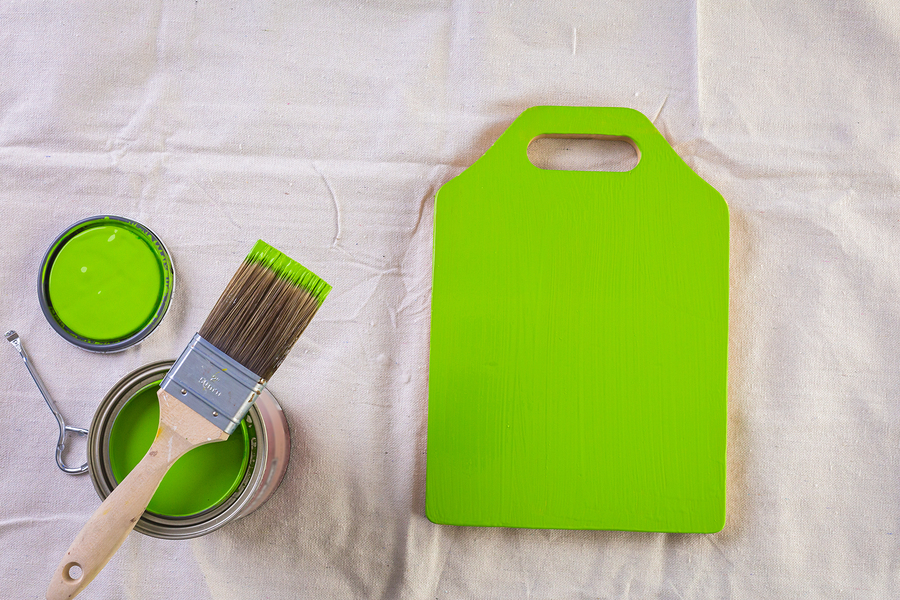Painters need a number of supplies in order to get the job done, and a high quality drop cloth is just as important to a painter as a paintbrush or can of paint. Drop cloths are placed over flooring and furniture and are designed to protect them from paint splashes and splatters. Drop cloths come in a number of different materials, but canvas and plastic are two of the most popular choices. What type of drop cloth will offer your valuables the most protection? Here’s what you need to know about canvas vs. plastic drop cloths:
Price
Drop cloth prices can vary depending on the size of the item, the quality of its construction, and the retailer. But in general, plastic drop cloths are less expensive than canvas drop cloths. In fact, canvas drop clothes are the most expensive of all drop cloths. It is tempting to purchase the drop cloth that costs the least simply because of its low price, but remember that price is just one of many factors you should consider before choosing a drop cloth.
The Weight of the Material
Plastic is a lightweight material, which makes it easier to throw over furniture. Since plastic is not heavy and bulky, it is the perfect material to use as a cover for odd-shaped furniture pieces. However, the lightweight nature of plastic also has its disadvantages. Professional painters know that when it comes to drop cloths, heavier fabrics are better because they are thicker than lightweight materials. Thick materials are more absorbent, so they absorb more paint and prevent it from soaking through to the furniture or flooring.
It can be hard to throw heavy canvas over a piece of furniture on your own, but this shouldn’t be the reason you decide against canvas. Ask a friend for help putting the drop cloths in position so you don’t feel the need to settle for a material that is easier to handle. Canvas also comes in a variety of different weights, so consider choosing a slightly lighter canvas if you’re concerned about an unmanageable weight.
Durability
Another important factor to consider is the durability of the drop cloth material. Professional painters think of canvas as an indestructible material–and for good reason. Plastic can tear easily, so it is not a good choice if you intend on covering sharp objects that could puncture the material. There’s no need to worry about puncture marks or tears in your canvas drop cloth, however. If you purchase a canvas drop cloth, it will last for years as long as it is stored and cleaned properly.
Slippery Surface
Since drop cloths are placed on the floor, it’s also important to consider the slipperiness of the drop cloth material’s surface. Most canvas drop cloths are designed with a rubberized butyl backing, which will grab onto the furniture or flooring and hold the drop cloth in place. This backing ensures that a canvas drop cloth will not slip and slide under your feet as you walk across it.
Plastic drop cloths are not designed with this feature, so they may not stay in place. This is a major problem when painting outside since a strong gust of wind could send your plastic drop cloth flying across the lawn. Both inside and outside, the lack of grip on a plastic drop cloth creates a dangerous safety hazard. If you cover your flooring with a plastic drop cloth, it’s important to wear slip resistant shoes and watch your step carefully. You should also consider taping the plastic drop cloth down or using weights on the edges of the drop cloth to hold it firmly in place.
Absorbency
As previously mentioned, canvas is a thick material that can absorb a great deal of paint. Plastic, on the other hand, is impermeable, but not absorbent. If paint is spilled on a plastic drop cloth, the paint will run down the length of the drop cloth instead of absorbing into the material. It will not seep through the plastic and ruin your flooring or furniture, but running paint could lead to a huge mess if every inch of your furniture and flooring is not covered with a drop cloth.
Reusability
Professional painters tend to gravitate towards canvas drop cloths because they are reusable. A canvas drop cloth can be washed and used an infinite number of times. But, plastic drop cloths are typically single-use products. It’s not logical for a professional painter to choose a plastic drop cloth since they paint so often, but this is a practical choice for homeowners who only need a drop cloth for a single painting project.
Impact on the Environment
Eco-conscious consumers may want to consider the impact that each drop cloth material has on the environment. Canvas drop cloths are durable enough to use over and over again, so you won’t produce as much waste as you would if you were to purchase a new plastic drop cloth for every paint project. Canvas is also made out of cotton, so it is a recyclable material that is accepted at nearly every recycling facility. Cotton is biodegradable, so it will break down over time even if the drop cloth ends up in a landfill. However, the same cannot be said for plastic. If choosing an environmentally-friendly drop cloth is important to you, it’s best to go with canvas instead of plastic.
By now, you should have a general idea of the differences between canvas and plastic drop cloths. For more information, contact Chicago Canvas & Supply. We are your leading source for textiles, theatre fabrics, tarps, drop cloths, and more. To ask us questions or request free material samples, contact us today by calling 1-866-389-2218 or emailing email@chicagocanvas.com.






Thank you for sharing this with us!
Thank you for posting this with us!